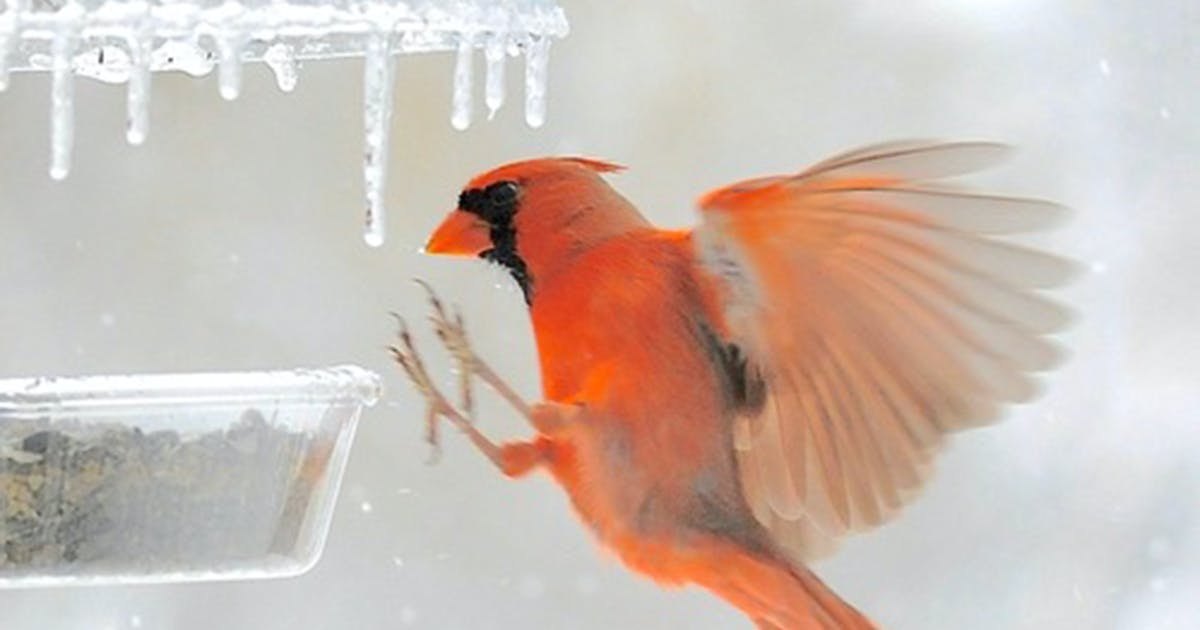Pine Siskins migrate south into urban areas due to lack of food in their northern range. There are siskins at our friends’ feeding grounds at various distances to the east, west and north. But as of mid-December, we couldn’t.
I was looking through records of birds seen here in previous winters and found that one day in February 2004, I wrote that we saw 28 cardinals in our yard one morning. (No mention of oriole.)
Twenty-eight is a lot of cardinals. If I didn’t trust the source, I probably wouldn’t believe it. Our highest number so far this weak winter is eight, and eight is a lot.
Our suburban lot backs onto about 10 acres of scrubby wetlands dotted with small trees. What we call landscaping includes shrubbery and uncut weeds. We feed the birds generously. Cardinals are supposed to love us.
But 28 of the favored species raise questions. Where do they come from and where do they go? How far do they have to fly to come here to feed? Are we the only ones who can buy black oil sunflower seeds?
Cardinals in this area of Minnesota are located at what was once considered the northernmost point of their range. Observers from the 18th to the 20th centuries considered cardinals a southern bird, but human work (aka climate) favored cardinals.
In the 2019 edition of his important book Birds of Minnesota, Bob Janssen shows that there are few counties in the state where cardinals are not seen year-round today. There are nesting records in Cook County, the tip of our Arrowhead region for goodness sake.
We warmed the climate and cleared forests to create more shrubbery edges. Many of us feed the birds. The cardinals prospered. They now range from Maine to South Dakota, through Kansas and Texas, and south to the Yucatan Peninsula.
The standard production model of Northern Cardinal has evolved into 18 subspecies. (A subspecies is a taxonomic category ranking lower than a species, usually a fairly permanently geographically isolated race of birds with significant physical differences.)
The cardinals you see here differ in color brightness or beak size from cardinals in Florida, Texas, or Quintana Roo, Mexico. For example, the reds of the cardinals I photographed in Arizona were richer and brighter than what we see in birds.
I saw the 2004 Cardinals out in our yard early in the morning, something I have become less familiar with over the years. Cardinals feed early and late in the day. (I never miss those feeding at dusk.)
Researchers say cardinals eat at the end of the day to provide the energy they need to survive the cold nights. Food at dawn replenishes expended energy. The term for this sunrise-before-sunset schedule is “twilight,” which in zoology describes the presence or activity of animals at dusk.
(I use twilight as the end-of-the-day word. Apple Dictionary says twilight is “the soft glow that shines from the sky when the sun is below the horizon,” and it covers both ends of the day.)
Cardinals do not migrate. Nine out of 10 individuals of this species were banded and subsequently captured near their nest, within 10 miles of the nest. They form loose flocks (28!) in winter and mostly roam the range.
Spring nesting territories defended by males range from half an acre to five acres. If we use 2 acres as the average territory size, and assume that the 28 birds in our yard, half male and half female, are all destined to pair up that spring (unlikely), their nesting territory will cover 24 acres.
It won’t be 24 contiguous acres, though, as the nests will be located somewhere suitable for habitat.
We can then share our bounty with our neighbors.
Lifelong birder Jim Williams can be reached at woodduck38@gmail.com.
#Cardinals #dont #migrate #lose #bright #colors #winter
Image Source : www.startribune.com
